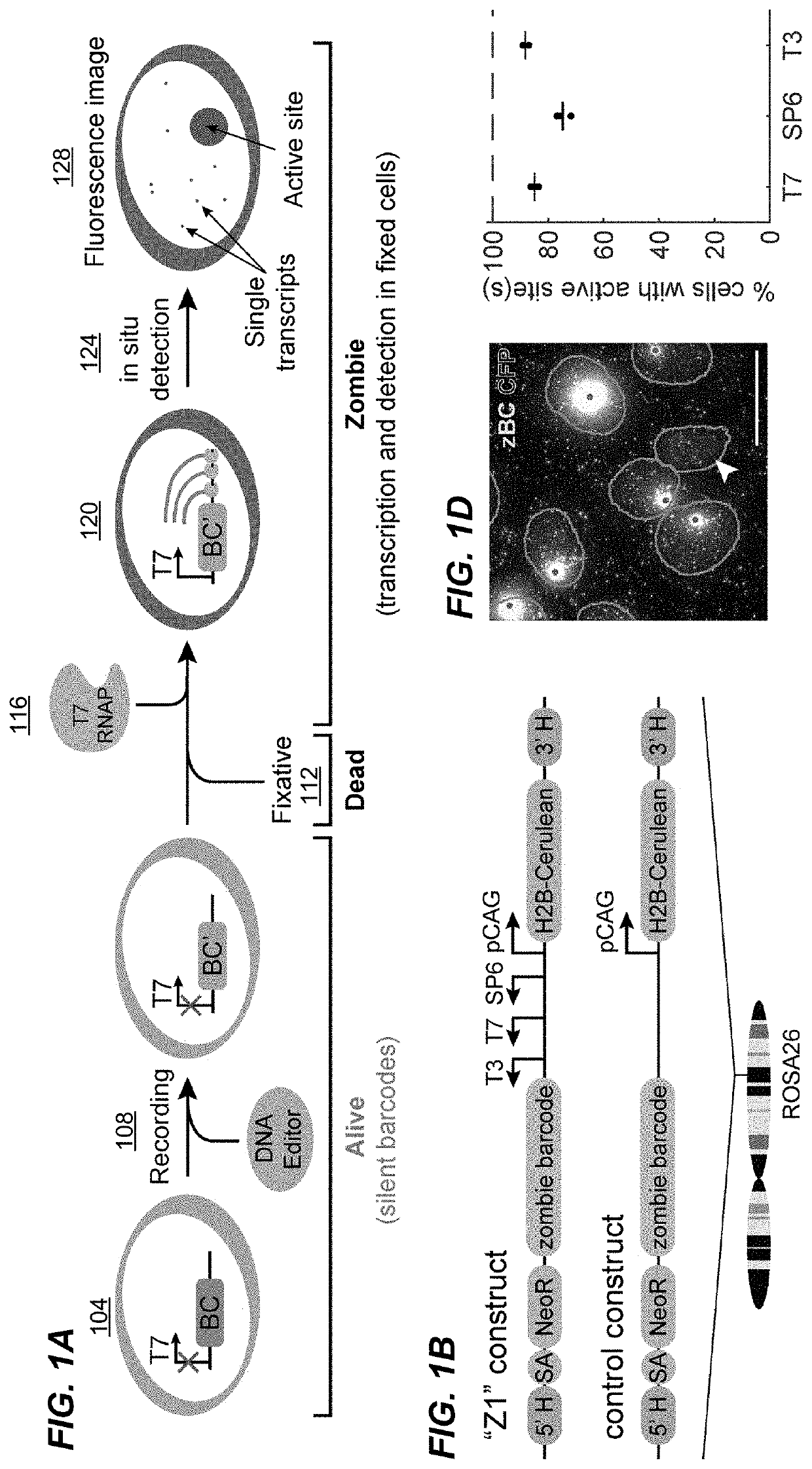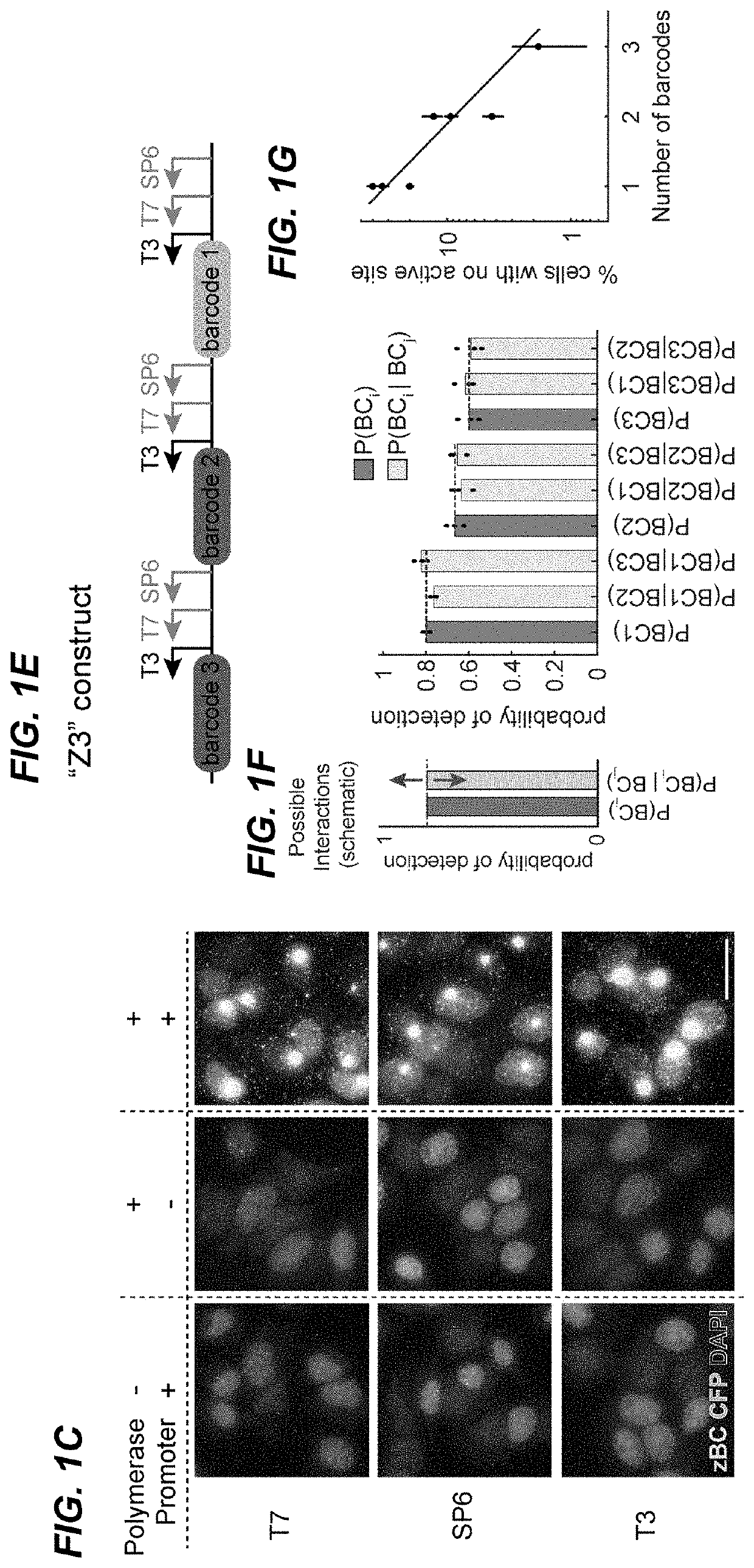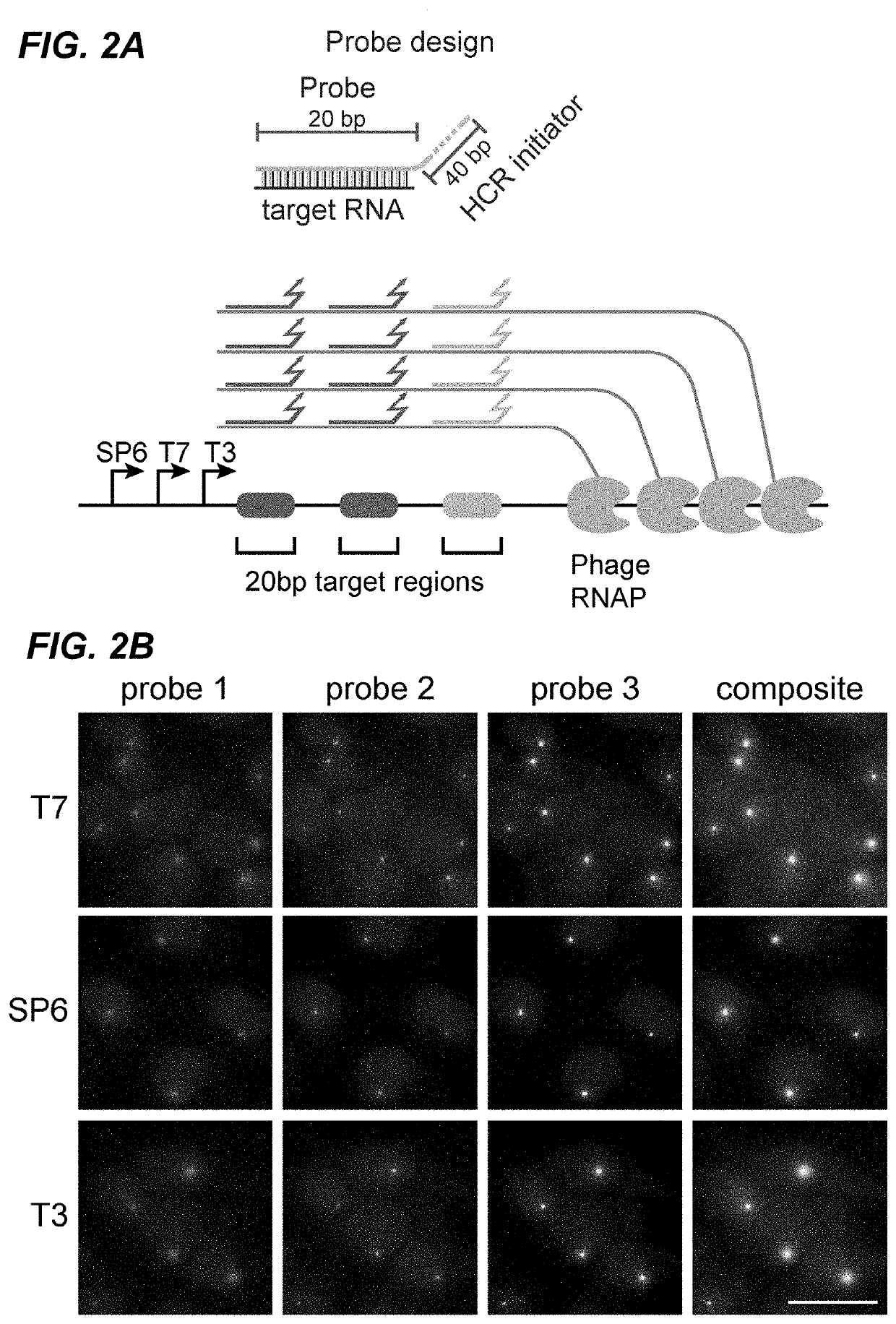In situ readout of DNA barcodes
a barcode and in situ reading technology, applied in the field of barcode cells, can solve the problems of difficult detection of barcode expression across a diverse population of living cells, and achieve the effect of high throughput screening
- Summary
- Abstract
- Description
- Claims
- Application Information
AI Technical Summary
Benefits of technology
Problems solved by technology
Method used
Image
Examples
example 1
Phage RNA Polymerases can Transcribe Synthetic DNA Barcodes in Fixed Cells
[0259]This example demonstrates transcription of synthetic DNA barcodes by phage RNA polymerases in fixed cells.
[0260]To develop a method for specifically amplifying and detecting barcodes integrated in the genome (FIG. 1A), a construct, labeled Z1 (FIG. 1B), containing a 900 bp barcode sequence downstream of tandem SP6, T7, and T3 phage promoters, along with an H2B-Cerulean fluorescent protein under the control of the constitutive mammalian CAG promoter for imaging of cell nuclei was designed. Z1 site was integrated specifically at the ROSA26 locus in mouse embryonic stem (mES) cells. A similar cell line was also made with a control construct that lacks the phage promoters (FIG. 1B).
[0261]To detect the barcode, polyclonal populations of cells were grown, fixed, added with the phage RNA polymerases in each, and performed HCR with a set of split initiator probes to detect RNA transcripts (see Methods for detail...
example 2
Zombie Enables Reliable In Situ Detection of 20 bp DNA Barcodes
[0266]This example demonstrates reliable detection of short DNA barcodes using the Zombie method and system described herein.
[0267]Barcode transcription produces multiple RNA molecules from the same template in close proximity, which effectively amplifies the barcode target and could facilitate robust detection of short barcodes. To test this, fixed mES-Z1 cells after the in vitro transcription step were hybridized with three orthogonal 20 bp probes targeting regions downstream of the phage promoters (FIG. 2A). The binding of these probes, by both smFISH and HCR were then analyzed. In both analyses, easily detectable transcription active sites were observed in all three channels (FIGS. 2B and 10). For all three phage RNA polymerases, the active sites could be detected in a large fraction of cells (FIG. 2C), and most dots were redundantly detected in multiple channels (FIG. 2D).
[0268]RNA transcription sites contain multip...
example 3
Zombie Enables In Situ Detection of Single Nucleotide Mismatches
[0270]This example demonstrates in situ detection of single nucleotide mismatches using the Zombie method and system disclosed herein.
[0271]Discrimination of small sequence differences could facilitate imaging-based barcoding applications. While structured and toehold probes can be used to detect single nucleotide variations by leveraging base pairing within the probe, traditional probes can bind to target sequences even when they contain a single nucleotide mismatch (FIG. 11). it was expected that simultaneously competing multiple probes, each containing a distinct nucleotide at a single site, for binding to the many transcripts present in an active site could lead to preferential binding of exact match probes over mismatch probes, and thereby enable nucleotide identification (FIG. 3A).
[0272]To test this idea, mES-Z1 cells, performed in vitro transcription were fixed with T7 RNA polymerase, and targeted a 20 bp region ...
PUM
| Property | Measurement | Unit |
|---|---|---|
| Fraction | aaaaa | aaaaa |
| Fraction | aaaaa | aaaaa |
| Time | aaaaa | aaaaa |
Abstract
Description
Claims
Application Information
 Login to View More
Login to View More - R&D
- Intellectual Property
- Life Sciences
- Materials
- Tech Scout
- Unparalleled Data Quality
- Higher Quality Content
- 60% Fewer Hallucinations
Browse by: Latest US Patents, China's latest patents, Technical Efficacy Thesaurus, Application Domain, Technology Topic, Popular Technical Reports.
© 2025 PatSnap. All rights reserved.Legal|Privacy policy|Modern Slavery Act Transparency Statement|Sitemap|About US| Contact US: help@patsnap.com



